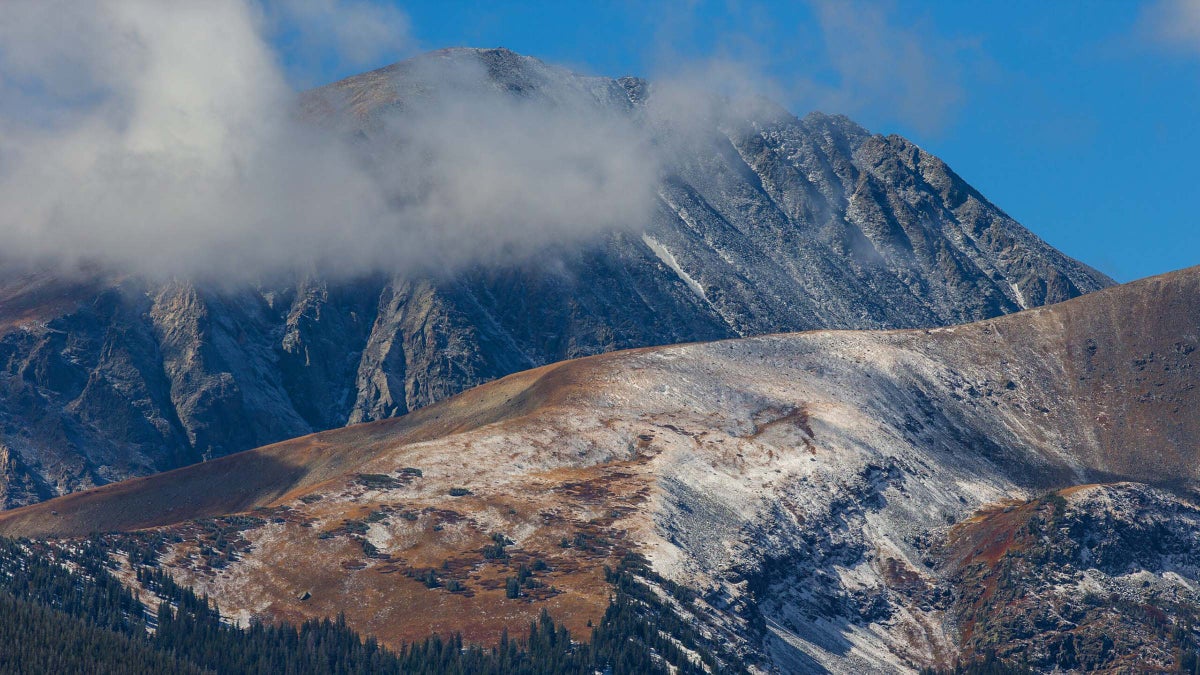



During 2020’s pandemic-fueled boom in hiking, Quandary Peak was the most popular high mountain in Colorado, drawing tens of thousands of hikers to its 14,271-foot top. Now, three years and a new set of parking restrictions later, data suggest that hiker traffic to the iconic summit has plateaued.
Brian Sargeant, the Colorado Fourteener Initiative’s Development and Communication Manager, told Backpacker that CFI’s data is preliminary, and doesn’t currently encompass the month of October. However, estimates suggest that visitation is: “probably going to fall somewhere between 25,000 to 30,000 range.”
Quandary reached its high-water mark in 2020, hosting about 49,000 hiker days. Since then, its visitation has dropped. In 2021, usage dipped to 35,000 hiker days. In 2022, it decreased by about another 13,000 hiker days, leaving it near its lowest visitation levels in about a decade and dropping it to second place in popularity behind Mt. Bierstadt.
In 2014, the Colorado Fourteener Initiative started a project that would allow them to track visitation in popular areas like Quandary Peak. Tracking traffic involves infrared counters that are mostly situated above treeline. According to that data, both Quandary Peak and McCullough visitation was higher than it was in 2022 and 2021, but still below pandemic levels.
It’s likely that the peak is reaching a visitation plateau: “I think we’re kind of settling back out to a more normal use….Barring any changes to access to these places, I think we’re going to kind of level off and see a steady plateau,” Sergeant said. “Or before the pandemic we were seeing a 3 to 5 % increase year over year.”
There are likely a number of reasons why hikers are overlooking Quandary. In response to 2020’s overcrowding, officials began enforcing parking reservations near the end of the 2021 season. The system was established to prevent road blockages, and safety hazards at the trailhead. Now, between June 17 and September 17, visitors to Quandary Peak Trails and McCullough Gulch have to reserve a parking permit that can cost as much as $50, or take a $7 shuttle (which formerly cost $15).
Sargeant notes that the restrictions could encourage hikers to tackle a less-regulated peak:
“There are other 14ers that don’t have those restrictions that are great places to cut your teeth and get your intro to high alpine hiking,” he says.
Officials note that parking revenue helps to operate the shuttle between Breckenridge and the trailheads. The system appears to be doing its job: Between the summers of 2022 and 2023, parking reservations increased by 11%, while shuttle use increased by 20% from summer to summer, bringing trailhead crowding down to a manageable level.
With new regulations in place, it’s unlikely that Quandary will look like it did during the pandemic again.
“I don’t know that we’re going to jump back up to those pre-pandemic levels. It’s really tough to track the trends because there have been so many changes that have affected particularly the front-range, easier-access fourteeners,” said Sargeant.
From 2023

